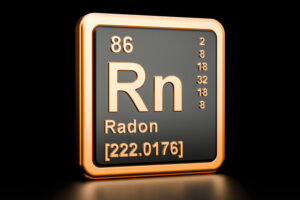
Radon is a nearly undetectable, radioactive gas. It is colorless and odorless, meaning it’s difficult for humans to detect on their own. That’s why we perform radon tests to determine how much radon is in your home. While a little radon is normal, excessive amounts can become dangerous. Here, we discuss the health effects people can experience when exposed to high levels of radon.
Radon and Lung Cancer
We mostly associate lung cancer with smoking, but radon is one of the leading causes of lung cancer in the United States. In fact, it is the number one case of lung cancer among non-smokers, and the second leading cause among smokers.
Radon’s radioactive particles are what cause lung cancer in adults. When you inhale them, the particles get trapped in your lungs and break down further, releasing small bursts of energy. These bursts of energy damage your lung tissue, resulting in lung cancer late in life.
Smokers vs. Non-Smokers
While not everyone who is exposed to radon will develop lung cancer, your risks are higher especially if you smoke. When radon levels reach 4 pCi/L, this is considered elevated, and the EPA recommends making necessary repairs and/or installation of radon mitigation systems to reduce the levels of radon in your home. However, the risk involved with these elevated radon levels varies depending on whether or not you smoke. At 4 pCi/L, about 7 people amongst 1000 non-smokers could get lung cancer as opposed to 62 people amongst 1000 smokers.
Whether you’re a smoker or non-smoker, high levels of radon in your home could cause serious health issues later in life. The first step in preventing this is to test your home for radon. At Axiom Service Professionals, we can perform radon testing and recommend next steps to keep you and your family safe. Contact us today to learn more.


Recent Comments